
by Coach Scott | Dec 21, 2013 | Atlanta Personal Trainer, Blog, Body By Fadi, Cardio, Exercise, Fitness, Health, Uncategorized, Virtual Trainer, Weight Loss, Wellness
Most athletes warm up before working out or competing to improve performance and to help prevent injury.
But to come up with a complete answer, you must be specific. What kind of warm-up are you doing? For what kind of activity are you warming up and what is your current conditioning level.
In this 2 part series you will discover the theoretical purpose of warm-up exercises, the psychological factors created by warming up and 4 styles of warm-up that will help improve your game!.
Physical Purpose Of Warming Up
-
Increased Muscle Temperature
-
Improved Metabolic Adjustment
-
Increased Velocity Of Nerve Conduction
-
Increased Capillaries Opened In Muscle
Psychological Factors Of Warming Up
- Skilled performance improves with activity identical or directly related to actual workouts and corresponding sports activities.
- Prior physical activity improves the “mental set” or attitude of the athlete, especially when the activity is related to the workout or corresponding sporting activity.
- Increased arousal or enthusiasm, eagerness and mental readiness.
One potential drawback of warming up is: Fatigue
Don’t mistake a good warm-up session for your workout.
Field Warm Up
This is the first of 4 warm-up styles you will learn over the next 2 blog posts.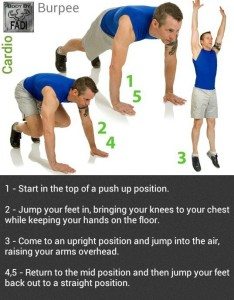
Field warm-up is an athletic series of exercises done on an open field used for outdoor or indoor. Performed at a light pace with some stretching similar to bootcamp style exercise not using any equipment, jogging and light calisthenics are examples.
Coming In Our Next Posting
Interval Warm Ups / Bar Warm Ups / 430’s Dynamic Treadmill
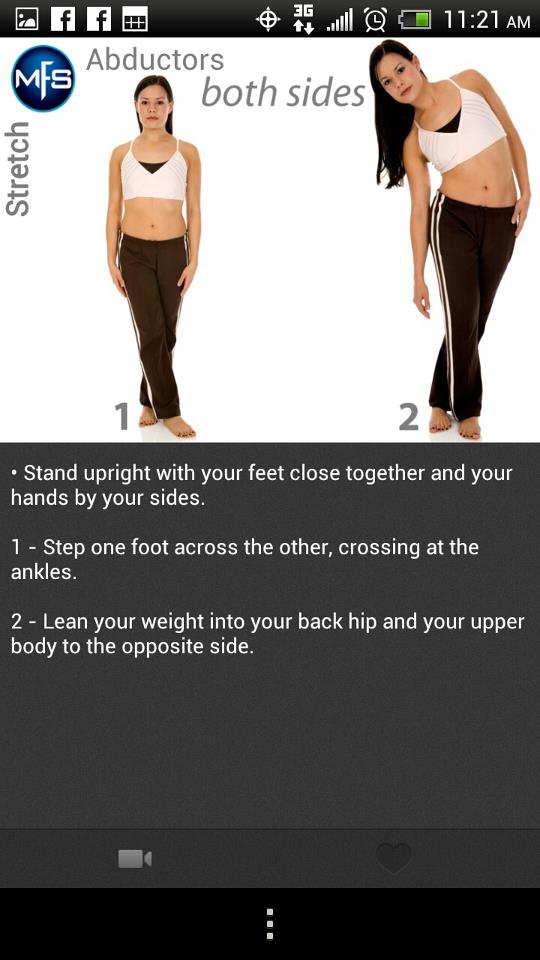
by Coach Scott | Dec 21, 2013 | Atlanta Personal Trainer, Blog, Body By Fadi, Exercise, Fitness, Health, Uncategorized, Virtual Trainer, Wellness
Stretching is one of the most overlooked aspects of a workout program / active lifestyle. The reality is that our bodies are designed to move on a near constant basis. But modern lifestyles have drastically changed human behavior and routines to a more sedentary lifestyle.
Hard physical labor has been replaced with more sedentary “mental” work styles which involve sitting at desk or standing in one place for extended periods of time.
A way to combat this sedentary lifestyle is to get up and MOVE. Take a walk, do some pushups and yes even stretch. And always, always- it is important to stretch your body before, during and after every workout. Stretching will keep your body warm and lubricated and it will help reduce injuries.
There are several ways to stretch. The two we will discuss are static stretching and ballistic stretching.
Static stretching is the typical method of stretching. Usually it is longer in duration lasting 30 to 60 seconds during each stretch. Ballistic stretching is the style Olympic swimmers use to warm up. They swing their arms back and forth very rapidly but smoothly to avoid injury. Both techniques work. But I recommend sticking mostly to the static technique and then add ballistic occasionally.
Stretching:
- Reduces muscle tension
- Improves performance

- Increases range of motion
- Increases flexibility
Stretching Tips
- Spend 10 – 30 seconds in each stretch. Don’t bounce.
- Good idea to stretch / warm-up at the same time.
- Perform before/during/after a work out and throughout the day.
- Along with stretching I recommend monthly or bi-monthly massage therapy. Deep massage helps the body eliminate lactic acid build up from weight training or other intense muscle activity.
- It is good to schedule chiropractic alignments.
Checkout your Virtual Trainer for many stretching routines!

by Coach Scott | Nov 10, 2013 | Blog, Body By Fadi, EatFadiFoods Recipes, Fitness, Health, Nutrition, Supplements, Weight Loss, Wellness
Pears are in season! They are sweet, delicious and richly flavored pears offer the c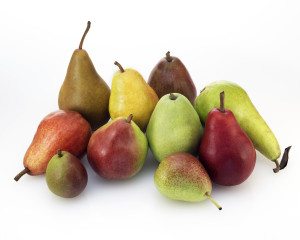 runchiness of apples yet are as juicy as peaches and nectarines.
runchiness of apples yet are as juicy as peaches and nectarines.
Pears are packed with health benefiting nutrients such as dietary fiber, anti-oxidants, minerals and vitamins, which are necessary for optimum health.
Pears are a good source of dietary fiber and regular eating of this fruit may offer protection against colon cancer. Most of the fiber in them is non soluble polysaccharide (NSP), which functions as a good bulk laxative in the gut. Additionally, the gritty fiber content binds to cancer-causing toxins and chemicals in the colon, protecting its mucous membrane from contact with these compounds.
In addition, pear fruit is one of the very low calorie fruits, provides 58 calories per 100g. Just a few sections a day in the diet can bring significant reduction in weight and blood LDL cholesterol levels.
They contain good quantities of vitamin C. Fresh fruits provide about 7% of RDA per 100 g.
They are moderate sources of antioxidant flavonoids phyto-nutrients such as beta-carotene, lutein and zea-xanthin. These compounds, along with vitamin C and A, help the body protected from harmful free radicals.
The fruit is a good source of minerals such as copper, iron, potassium, manganese and magnesium as well as B-complex vitamins such as folates, riboflavin and pyridoxine (vitamin B-6).
Although not well documented, pears are among the least allergenic of all fruits and are therefore recommended by health practitioners as a safe alternative in the preparation of food products for allergy sufferers.
Since several of the vitamins and minerals are concentrated in significant quantities just underneath the skin, pears should be eaten as a whole along with its skin to get maximum benefits.
Here is a delicious recipe for a low-fat Pear and Spinach Salad.
This is a nice fall salad that makes use of wonderfully fragrant ripe pears. The hardest thing about making this pear and spinach salad is not eating the pears ahead of time. Feel free to add some slivered red onion or a half cup of sliced mushrooms or a tablespoon of crumbled feta cheese to this delicious salad to contrast the sweetness of the pears, raisins or cranberries.
Ingredients: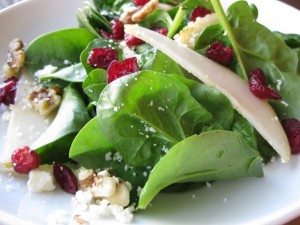
•1 10 ounce package baby spinach
•3 ripe Bartlett pears, peeled, cored and sliced
•1/2 cup raisins or dried cranberries
•1/4 cup chopped walnuts
•2 tsp extra-virgin olive oil
•3 tbsp white wine vinegar
•1 tbsp lemon juice
•Pinch of Himalayan salt (optional)
Preparation:
Wash and dry spinach and place in large bowl with pear slices. Sprinkle raisins and walnuts on top. Whisk oil, vinegar, lemon and salt and drizzle over salad.
Serves 4-6
Per Serving: Calories 164, Calories from Fat 46, Total Fat 5.2g (sat 0.5g), Cholesterol 0mg, Sodium 39mg, Carbohydrate 26.6g, Fiber 3.8g, Protein 2.8g
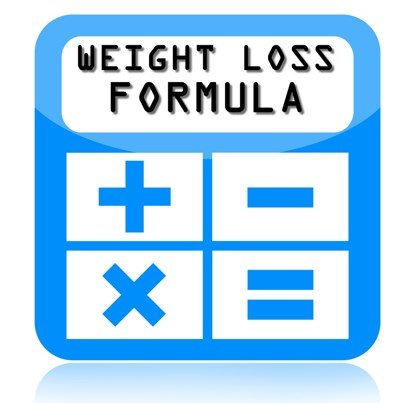
by Coach Scott | Sep 16, 2013 | Blog, Health, Motivation, Nutrition, Supplements, Weight Loss, Wellness
Formula 5/3/12 is your fat loss success formula: Eat 5 meals a day every 3 hours with a 12 hour fast.
This formula is not only good for fat burning but those seeking muscular gain can also benefit from eating 5 or 6 meals every day.
Reasons To Eat 5 or 6 Meals Each Day
- Speeds up metabolism.
- Long term consumption of hard to digest large meals that are poor nutrient dense meals causes your body to “shut” down and hibernate. When this occurs the body stores more of your consumed meals as fat and stores toxins that are hidden inside of the processed foods you consume inside of your fat tissue.
- Diminishes the desire to overeat.
- Puts less stress on your colon.
- Easier for your body to digest.
- Stabilize blood sugar levels.
Success Tips
- Use a timer: your watch, smart phone, tablet, computer or other timer and set it to beep every 3 hours. Eat when it tells you to eat.
- Pre cook and pre package your food and keep it on hand.
- Carry easy to eat foods everywhere you go: Boiled eggs, healthy supplements, fruits and vegetables are good examples.








